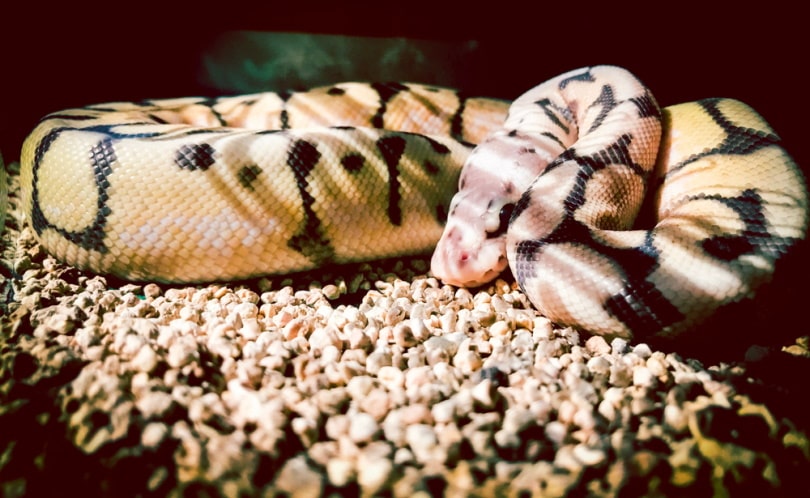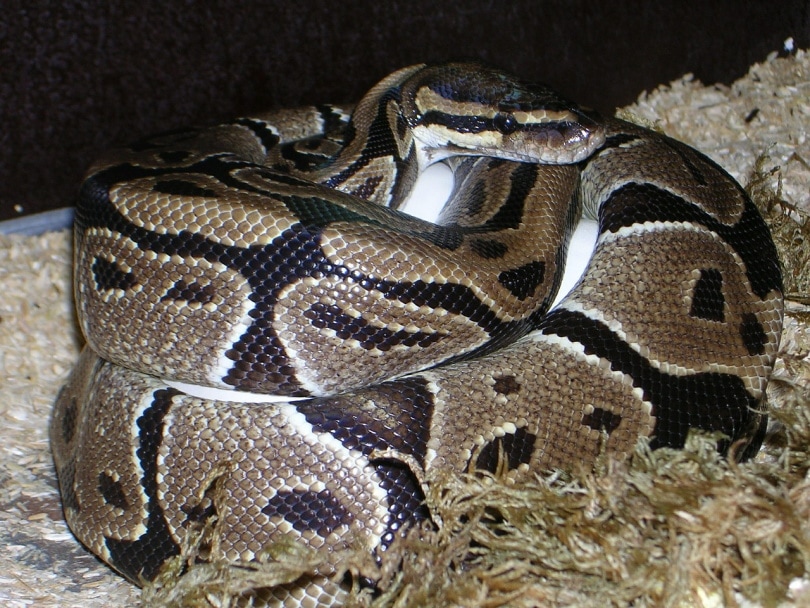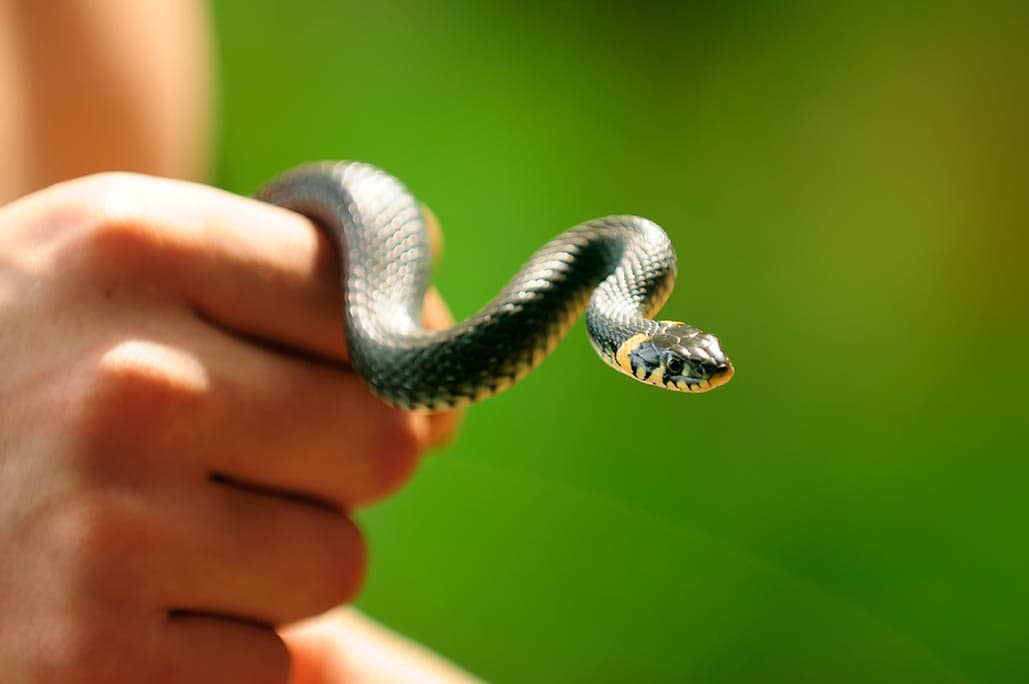
The Ball Python is arguably the most common type of household pet snake in the United States. Their name may seem scary, but there is nothing scary about them. These snakes are typically tame and docile. They are easy to take care of, and they can adapt to just about any environment that they find themselves in. However, Ball Pythons can grow up to more than a whopping 5 feet in length, which means that they need more than just a small box or aquarium to live in.
What size cage is right for a Ball Python? A few factors come into play when deciding what is right for your pet snake. A properly sized habitat is essential for the optimal health of these snakes, which can live up to 30 years and sometimes even longer. Here is how to choose the right cage size for your Ball Python.
First Things First: Consider Their Wild Nature
To know what type of habitat a Ball Python needs, it is important to understand how they live in the wild. The Ball Python’s habitat should be large enough not only for them but also for a variety of items that will remind them of their wild habitat. The first thing you should know is that Ball Pythons prefer grasslands, like those found in their native African lands.
These snakes can be found living together in the wild, but they are not particularly social, and they do not need another snake to live with to thrive. They are burrowing animals that sleep during the day and come out at night to hunt. They are used to having plenty of rodents to hunt and eat whenever they are awake. So, their habitat will need space for plants, grasses, and something like dirt or newspaper shreds to burrow in.

Next, Know Your Snake’s Age and Then Start Measuring
To figure out how big your snake’s habitat needs to be, you should know the age of your snake to determine whether they have any more growing to do. Full-grown Ball Pythons can grow to be between 4 and 6 feet in length, so if your snake is not that long, chances are that they are not done growing. However, there are exceptions to this rule, and some Ball Pythons will not grow to be any longer than 2 or 3 feet in length.
So, unless your snake is already 5 or 6 feet in length, you will need to know the age of your snake before creating a permanent habitat for them. If you assume that your snake will get larger when it is fully grown, you might end up wasting efforts and materials by making a habitat that is larger than is necessary.
If your snake is still growing, you can choose to provide them with new habitats as they grow until they reach their full length, when they will be introduced to their permanent habitat. Or, you can create a habitat that would be large enough for them once they become fully grown and skip the need to keep replacing it.
Check This Sizing Chart
There is no specific standard when it comes to habitat size for Ball Python snakes. There are no rules or laws regarding the topic, but there are recommendations that breeders and experienced snake owners have to offer. It is generally accepted that your Ball Python will need at least 2 feet of space lengthwise for every 3 feet that they are in size at a bare minimum.
However, this is just to keep the snake alive. If you want your Ball Python to be happy and healthy throughout its life, you should aim for 2 feet of habitat length for every foot that your snake is long. Here is a basic guide to follow:
| Snake Size in length | Recommended Habitat Size in Length |
| 1-2 feet | 2-4 feet |
| 3-4 feet | 6-8 feet |
| 5-6 feet | 10-12 feet |
Generally, smaller snakes can do fine in a 20-gallon tank, while larger snakes should be introduced to a tank of at least 40 gallons in size. The height of the snake’s habitat does not have to be dramatic, as they are ground dwellers and burrowers. They do not typically climb upward, so the length is the most important consideration to make when choosing a cage size for your Ball Python.
We recommend Petco or Chewy as the go-to place for buying a Ball Python cage.

Finally, Outfit the Habitat for Optimal Comfort and Health
Once you choose a cage size for your Ball Python to live in, you should outfit it to ensure optimal comfort and happiness. Firstly, a bowl of clean, fresh water should always be available. Placing the water in a bowl that is designed to look like a rock will help keep the water from spilling and give the habitat a natural look and feel.
The habitat should also include at least two hideouts, as Ball Pythons like to burrow or hide away while they sleep during the day. Hideouts can be anything from a basic fake hollowed log to a lifelike rock cave that can be stuck to the side of the habitat so it does not take up any ground space.
Your Ball Python’s habitat should also be filled with a variety of rocks and foliage, which is what they would expect to encounter in the wild. Things like silk plants, gym-like habitat rocks, and Ficus branches are all great options. The idea is to make the habitat space look and feel like a setting that your snake would encounter in the wild.
Finally, you should fill the bottom of the habitat with substrate, which is like a filler nest that mimics the ground that a snake might come across in the wild. It helps catch feces and gives snakes extra comfort. You can use dirt or shredded newspaper. However, dirt is hard to clean and replace compared to other options, and newspapers will need to be changed often.
Consider investing in a commercial substrate, such as exotic pebbles, that can be taken out of the habitat, washed, and put back in when necessary. You will not have to continuously pay for substrate when going this route. You can also find shredded substrate made of coconut fiber that is made to be discarded and replaced regularly as time goes on.

In Conclusion
Taking care of a snake is not nearly as tough as taking care of a dog or cat. However, Ball Pythons do require a serious long-term commitment and a suitable habitat to live in. It is important to think long and hard before buying a Ball Python about whether you want to make such a commitment. Are you ready to start taking care of a cool Ball Python of your own? Share your plans with us in the comments section below.
- See also: How Big Do Ball Pythons Get?
Featured Image Credit: Photohobbiest, Shutterstock








